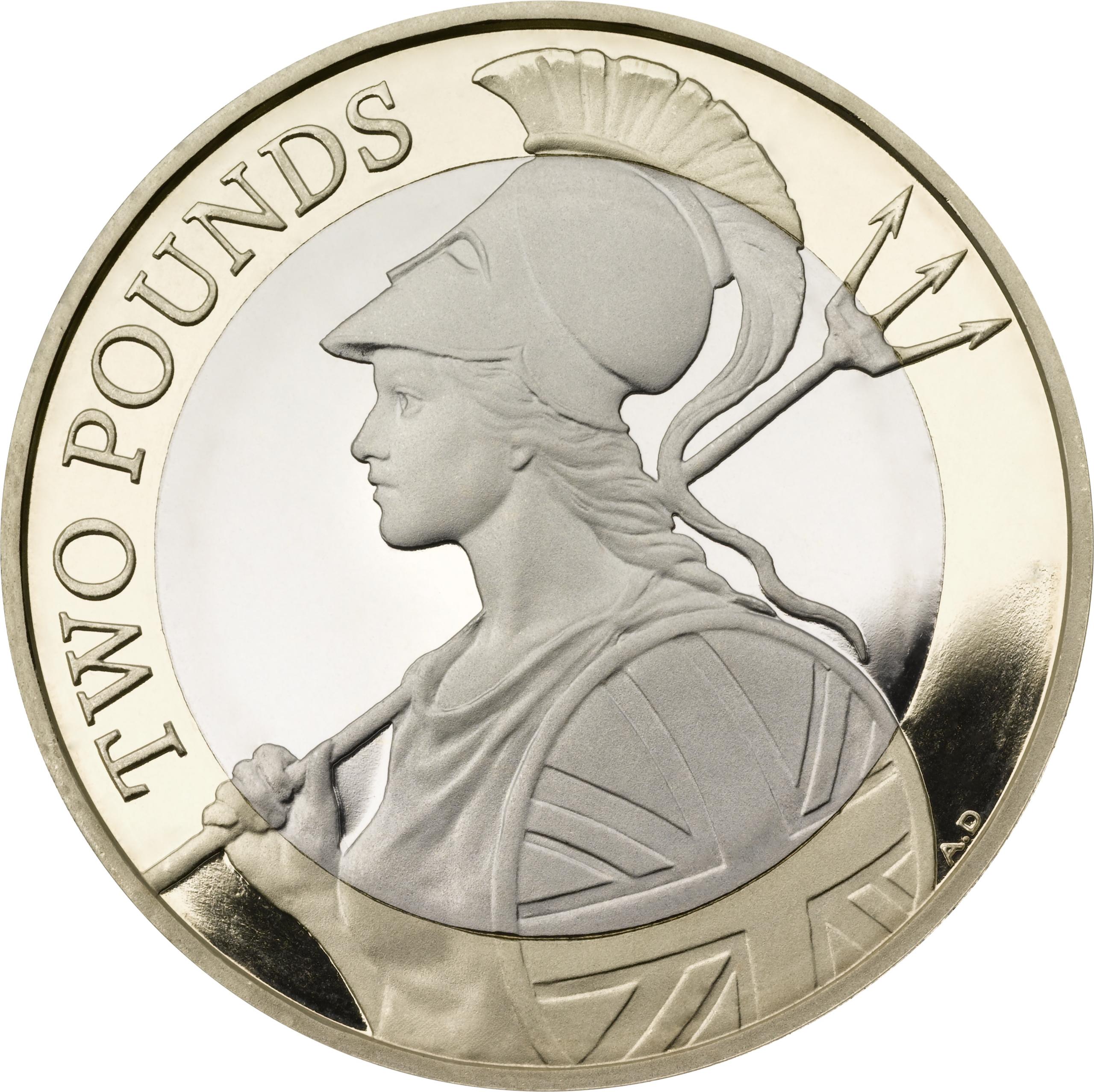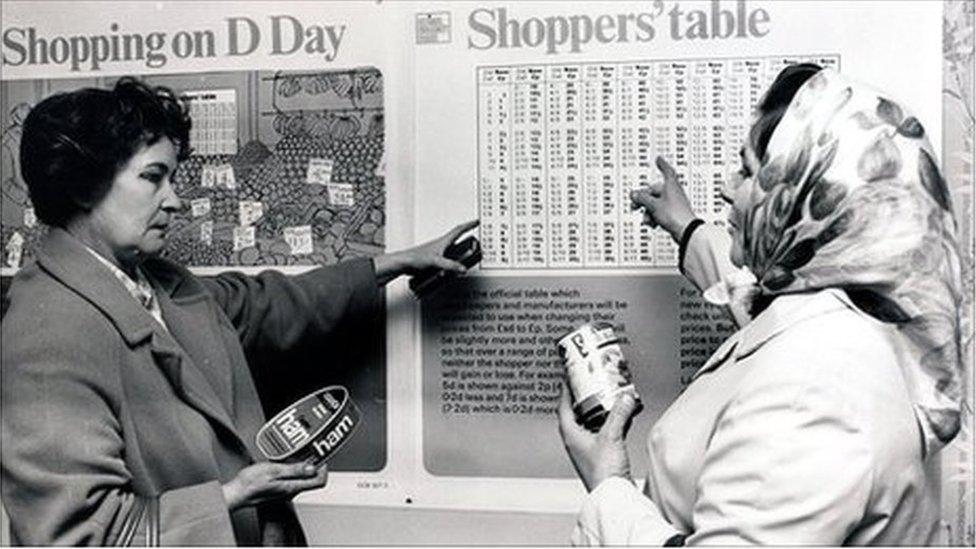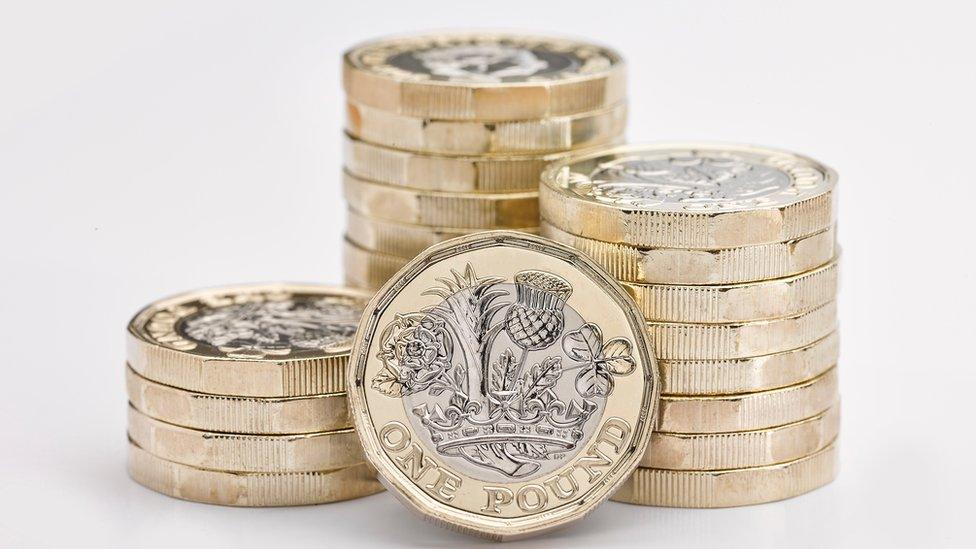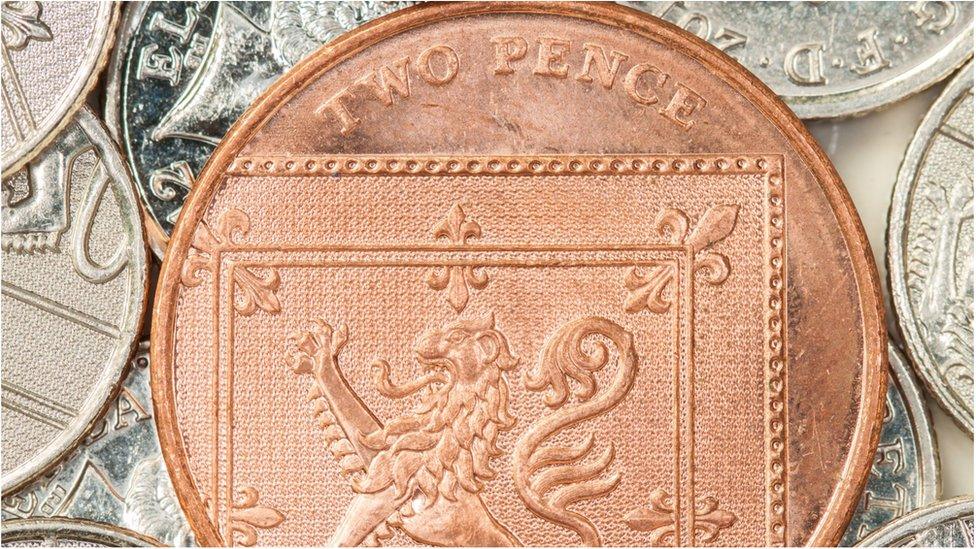Decimalisation and the coin you really want to find in your change
- Published

Fifty years ago, the UK converted to a decimal currency, and one and two new pence coins became the modern way to pay.
Now, there is another debate, over the need to keep notes and coins when we increasingly pay with cards or through digital devices.
To mark the anniversary of Decimal Day, Chris Barker, research manager at The Royal Mint Museum, has picked out some recent coins that are of fascination to collectors and enthusiasts, or which reveal how the country and technology have changed.
The 2009 Kew Gardens 50p


This is arguably the circulating coin most sought after by collectors - nothing gets people quite as excited as the 2009 Kew Gardens 50p.
The design was created by Christopher Le Brun and features the famous Chinese Pagoda at Kew with a decorative leafy climber twining in and around the tower.
Only 210,000 were released into circulation, with almost all of them now in collectors' hands, so the chances of coming across one in your change are slim.
There are so few because, at the particular point in 2009, there was low demand for 50 pence pieces, and that resulted in a low mintage - or production run - of the Kew Gardens 50 pence.
The 2015 Britannia £2 coin


Britannia first appeared on Britain's coins in the Roman era, as the female embodiment of the nation.
She was revived in the 1670s and featured prominently on money until 2008 when all circulating coins were redesigned to form a shield.
It looked like she might disappear from the nation's change forever, but was rejuvenated on the £2 in 2015 to uphold a longstanding tradition.

Decimalisation - a history

Shoppers had to learn how to use decimalised currency from 15 February 1971
On 14 February 1971, there were 12 pennies to the shilling and 20 shillings to the pound. The following day the pound was made up of 100 new pence.
Decimalisation is when a currency is based on simple multiples of 10 and 100.
France and the United States had gone decimal in the 1790s. During the 1960s, a number of Commonwealth countries made the change, such as Australia, New Zealand and South Africa.
Three years before "D-Day" or Decimal Day, new 5p and 10p coins were introduced. They were of the same size and value as the existing one and two shilling coins. Then in 1969, a 50p coin was introduced to replace the 10 shilling note. The 50p coin was referred to as a 10 shilling coin at the time.
On Monday, 15 February 1971, the process was completed when the new halfpenny, 1p and 2p coins were introduced, although the halfpenny was later withdrawn from circulation in 1984.
The banks were closed for four days from the previous Thursday to prepare for the decimal changeover.

The new £1 coin

The old £1 coin had become susceptible to counterfeiters, and it was estimated that one in 30 "round pounds" were fake.
After more than 30 years in the nation's pockets, it was replaced with a new, 12-sided £1 coin in 2017. The new £1 features a range of overt and covert security features that, when combined, make it the most secure coin in the world.
In a rare move, the public was offered the opportunity to design the reverse of the £1 coin and more than 6,000 entries were received. The panel chose an entry by 15-year-old Walsall schoolboy David Pearce,
The Brexit coin and EU series


Last year, The Royal Mint issued a coin to mark the UK's departure from the EU, more commonly referred to as the "Brexit" coin.
Almost 10 million of the coins entered circulation. The Royal Mint opened its visitor attraction for 24 hours to accommodate collectors, with more than 2,000 people attending to strike their own Brexit coin.
This coin marks the fourth time that a commemorative coin has been produced to mark the UK's relationship with the European Union. The Royal Mint produced a coin when the UK joined the European Economic Community in 1973, created a design for the single market in 1992, and to mark the UK's 25th anniversary of joining the EU in 1998.
The 50p charts the history of the UK's membership of the EU in 1973 to its eventual withdrawal in 2020. They are a fascinating historical resource that marks the changing nature of the relationship.
Related topics
- Published18 September 2020
